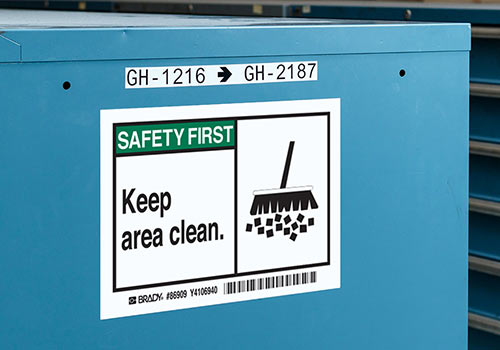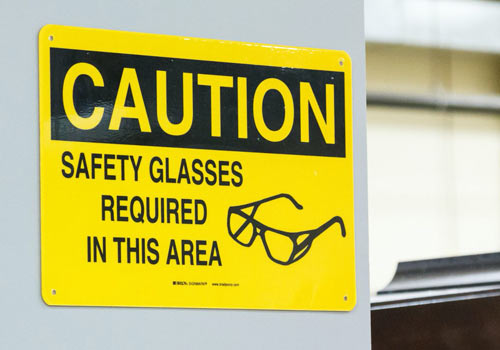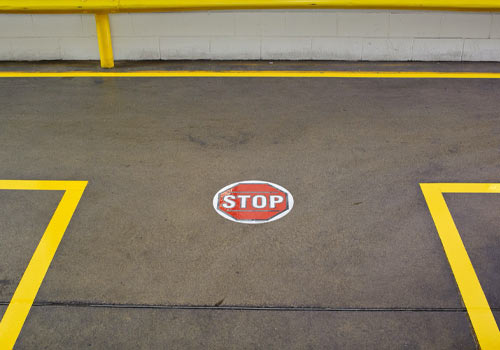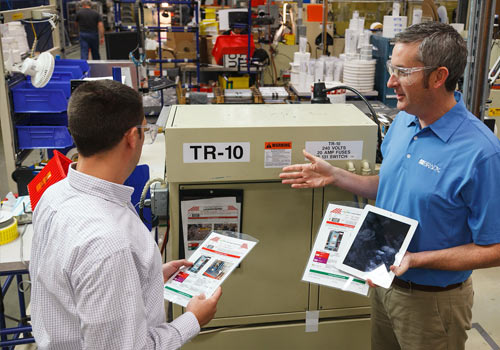Labels for Safety, Visuals and Facility ID Desktop Printers
Labels for Product, Wire and Lab ID Benchtop Printers
Labels for Safety, Visuals and Facility ID Desktop Printers
Labels for Product, Wire and Lab ID Benchtop Printers
Safety and Facility ID Desktop Printers
Product, Wire and Lab ID Benchtop Printers
Barcode Scanner and Printer Kits
Barcode Scanner and Printer Kits
PaintStripe Floor Marking Stencils
Valve Lockouts & Hose Lockouts
Group Lock Boxes & Permit Control
Brady Safety Lockout Tagout Services
Pipe Marker Accessories & Mounting Brackets
Maintenance and Production Tags
Calculators and Assessment Tools
Product Finders and Data Sheets
Good or bad, every company has a safety culture, and your employees’ behaviors, knowledge, habits and beliefs about safety are what create it. Creating a culture of safety isn’t easy, but the rewards are worth the effort: a strong, positive safety culture results in fewer accidents, happier employees, increased productivity and lower insurance and management costs. Employees are happy because they’re not getting hurt and the company is happy because the business is running smoothly—it’s a win for everyone involved. So, what are the keys to successfully building a safety culture?

How do you improve safety at work? It’s the question every business wants to answer. To find that answer, start by looking at what you already know about incidents in your workplace. There are two types of data to consider:
The number of people that got hurt, and how it happened. When you collect data about safety in the workplace, patterns become clear. These lagging indicators allow you to identify areas or processes within your business that are causing accidents. If you analyze the data and notice that a high percentage of your accidents happen in one area of your business, you’re now able to focus your attention and make real change.

While lagging indicators are focused on the past, leading indicators are focused on the future. They provide information that can help prevent future accidents by showing how safe your company is at the moment. For instance, by tracking your safety audit data, you might notice that a large number of employees are not wearing their eye protection, and a future eye injury might be around the corner. You can use this data to make a conscious push to improve compliance with the company’s eye protection policy and stop accidents before they happen. One way to prevent accidents before they happen is by using safety signs. This will take you from a reactive safety culture to a proactive safety culture.
For safety to become a part of the culture, there needs to be buy-in from the top of an organization down. The value of safety at work must be communicated and demonstrated by all levels of management. Contradictions between what management says and their actions can make it difficult to encourage employees to adopt safety practices. It can’t only come from the organization’s safety professionals—it needs to come from the person who signs their time card. When leaders talk the talk and also walk the walk, you start getting some real momentum.
When developing a safety culture, it’s vital that you properly train your employees with the knowledge and tools to make smart decisions. If they’ve never been trained to perform a task properly, they may not know the best way to perform it safely. If they’re working around rotating equipment, teach them about hand placement and how loose clothing can get caught. If they’re using a bandsaw, teach them about body positioning and proper tool maintenance. Train them in best practices, what to look out for and how to keep themselves and their coworkers safe.
While training sessions are essential to ensure your employees have the information they need, regular reminders keep everyone on track. Adding signs and labels around hazardous areas can help prevent accidents before they happen.

Demonstrate the importance of safety in the workplace by making it the first topic of every meeting. Open the meeting by discussing recent accidents, events or near misses and encourage group participation and the creation of a proactive safety culture. By discussing safety as a group, you’re able to view issues from multiple perspectives and are better able to identify hazards and their solutions quickly. And by making safety the first topic, you’re demonstrating its importance and putting the idea of safety in their head, which they’ll hopefully carry with them throughout the day.
Safety at work is a team effort, and getting all members of staff involved is crucial when developing a safety culture. One way to involve employees is by creating a hazard recognition program. Encourage employees to identify hazards in their work areas, fix or alert management to the hazard, record what they found and steps they took and submit it to managers. Reward the best “catch” with a prize at the end of each week. This is a good way to start getting people involved in actively making their work area safer. By offering incentives, you slowly start to create positive behaviors and build a proactive safety culture.
Employees must know their responsibilities concerning safety at work. The policies must be black and white and available for every employee to read and understand; there can’t be any ambiguity. When a workplace safety policy is updated it must be communicated widely and often until it becomes common knowledge.
Think of an example from your own life. Was there ever a time when a new policy was sent out in an email and the very next meeting several coworkers said they had no idea there was a change? You must confirm that everyone is aware of changes to policy — emails, phone calls, face-to-face conversations — whatever it takes. If your employees don't know the rules, how can they be expected to follow them?
Communication shouldn’t end with sharing safety policies. Reinforcing these policies at the point of need can help you keep safety top of mind for your employees. Being able to use label printers in house and a visual workplace can resolve any information gaps and reinforce your message through signs, labels, floor marking and more.

What do you do when everyone knows the rules, but some are still not complying? You create a formal safety accountability policy. This is an essential step when creating a culture of safety. If there are no consequences for employees who willfully violate the company's workplace safety policy, there is no incentive for them to change their behavior. A safety accountability policy clearly defines violations, their severity and how they will be handled. All employees must then sign the policy confirming their understanding and agreement which ensures the clear communication of the policy with employees.

Building a safety culture is a lot of work, but it's worth it. Safe employees are happy employees and happy employees work harder to help a company meet its goals. By implementing these seven steps to creating a culture of safety, you’ll be well on your way to improving safety in the workplace and taking your business to the next level.
Need help improving your safety procedures around lockout tagout, arc flash, confined space and more? Our in-house safety services team of experts can bring confidence to your program. Brady partners with you to reach and sustain your safety goals.
Complete our short form and one of our representatives will contact you.